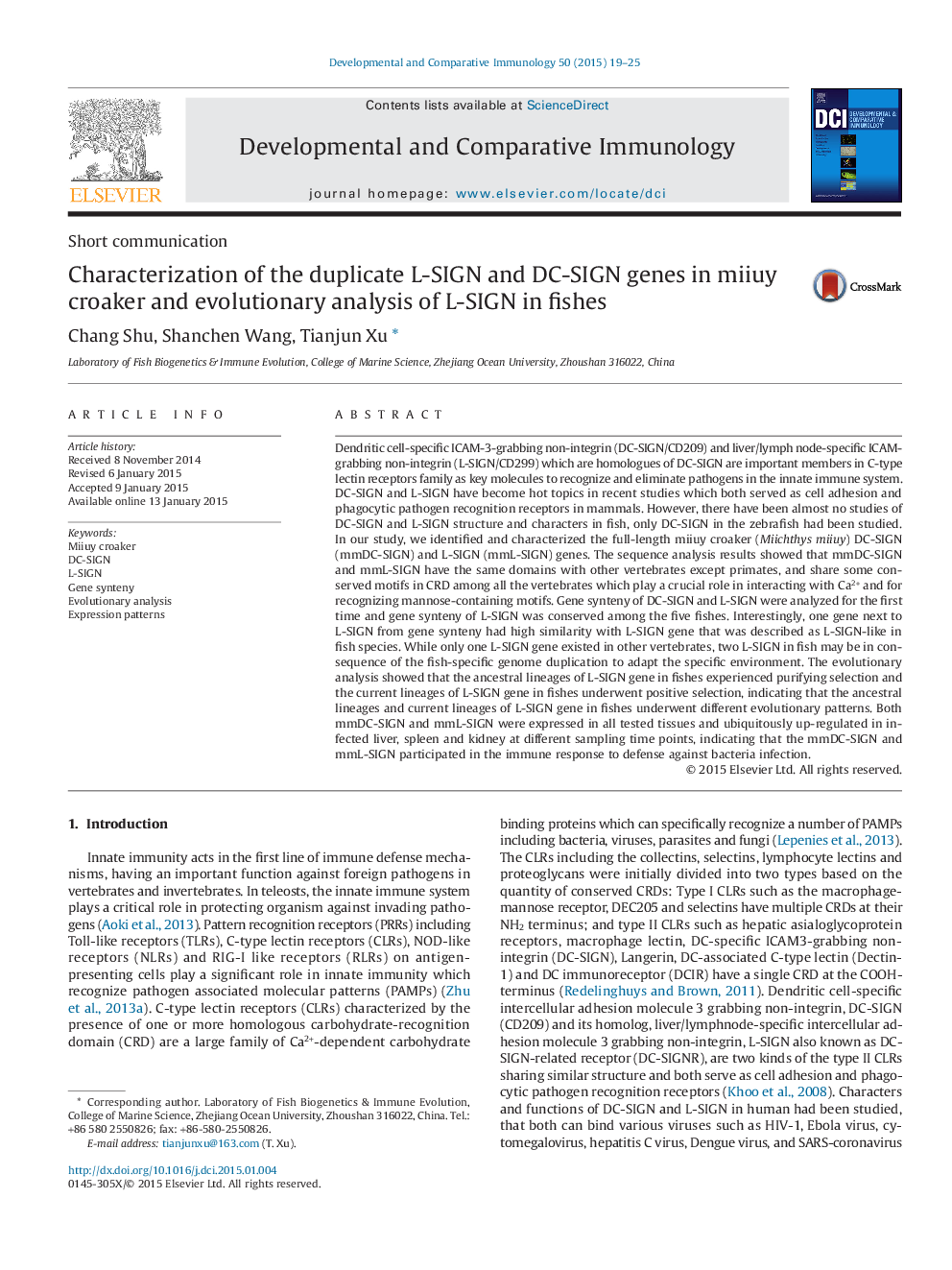| Article ID | Journal | Published Year | Pages | File Type |
|---|---|---|---|---|
| 2429002 | Developmental & Comparative Immunology | 2015 | 7 Pages |
•Miiuy croaker DC-SIGN and L-SIGN have been comprehensively analyzed.•An additional L-SIGN-like gene exists in some fishes which may be from L-SIGN duplication.•We are the first to explore conserved gene synteny of L-SIGN in teleosts.•The current lineages of L-SIGN in fishes undergo positive selection.•Miiuy croaker DC-SIGN and L-SIGN play important roles in immune response.
Dendritic cell-specific ICAM-3-grabbing non-integrin (DC-SIGN/CD209) and liver/lymph node-specific ICAM-grabbing non-integrin (L-SIGN/CD299) which are homologues of DC-SIGN are important members in C-type lectin receptors family as key molecules to recognize and eliminate pathogens in the innate immune system. DC-SIGN and L-SIGN have become hot topics in recent studies which both served as cell adhesion and phagocytic pathogen recognition receptors in mammals. However, there have been almost no studies of DC-SIGN and L-SIGN structure and characters in fish, only DC-SIGN in the zebrafish had been studied. In our study, we identified and characterized the full-length miiuy croaker (Miichthys miiuy) DC-SIGN (mmDC-SIGN) and L-SIGN (mmL-SIGN) genes. The sequence analysis results showed that mmDC-SIGN and mmL-SIGN have the same domains with other vertebrates except primates, and share some conserved motifs in CRD among all the vertebrates which play a crucial role in interacting with Ca2+ and for recognizing mannose-containing motifs. Gene synteny of DC-SIGN and L-SIGN were analyzed for the first time and gene synteny of L-SIGN was conserved among the five fishes. Interestingly, one gene next to L-SIGN from gene synteny had high similarity with L-SIGN gene that was described as L-SIGN-like in fish species. While only one L-SIGN gene existed in other vertebrates, two L-SIGN in fish may be in consequence of the fish-specific genome duplication to adapt the specific environment. The evolutionary analysis showed that the ancestral lineages of L-SIGN gene in fishes experienced purifying selection and the current lineages of L-SIGN gene in fishes underwent positive selection, indicating that the ancestral lineages and current lineages of L-SIGN gene in fishes underwent different evolutionary patterns. Both mmDC-SIGN and mmL-SIGN were expressed in all tested tissues and ubiquitously up-regulated in infected liver, spleen and kidney at different sampling time points, indicating that the mmDC-SIGN and mmL-SIGN participated in the immune response to defense against bacteria infection.
